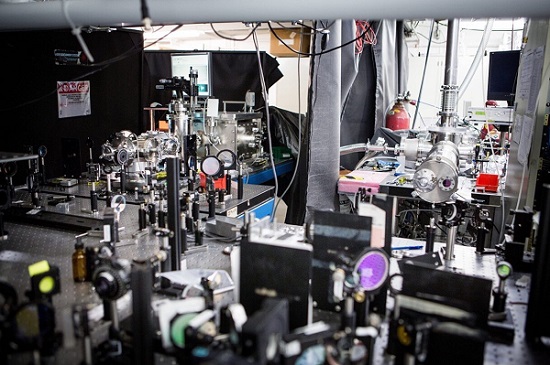Researchers led by Tsuneyuki Ozaki and François Légaré at the Institut national de la recherche scientifique (INRS) in Quebec have developed a method that could bring extreme ultraviolet (EUV) femtosecond lasers out of synchrotron facilities and onto the optical table. The technique, based on high-order harmonic generation (HHG), enhances the power of a laser source emitting EUV light pulses by a factor of 10. The underlying mechanism involves the role of dark-autoionizing states through coupling with other pertinent electronic states.
In addition to providing an intense light source, the work and developed technique allowed the team to study the ultrafast dynamics of a single dark autoionizing state at the femtosecond timescale, which was previously impossible due to its inability to undergo single-photon emission or absorption, combined with the ultrashort lifetime of these states.
Such dark states could be the basis of several quantum technologies, especially in improving the performance of quantum computers.
“The ability to study dark autoionizing states is significant because it can provide insights into the fundamental behavior of matter on very short timescales,” Mangaljit Singh, a postdoctoral researcher in Tsuneyuki’s lab at INRS and first author of the study, told Photonics Media.
According to Singh, in atomic physics, a dark state refers to a state of matter that cannot emit or absorb light due to certain selection rules. “This means that the state cannot be directly observed through standard spectroscopic techniques, making it difficult to study its properties and dynamics,” Singh said.

An international research team led by professors Tsuneyuki Ozaki and François Légaré at the Institut national de la recherche scientifique (INRS) developed a method to enhance the power of a laser source emitting EUV pulses. The method supports the transition of bringing intense EUV laser sources from large-scale facilities to the laser laboratories. Courtesy of INRS.
Autoionizing states, Singh said, are states that can decay into a lower energy state by ejecting an electron. These states have a lifetime measured in femtoseconds, which further complicates their study.
The current work uses HHG to enable the study of these states, an optical phenomenon unconventional to laser physics. High-order harmonic generation for EUV light sources typically uses noble gases to convert visible or long infrared wavelength intense laser pulses into EUV pulses. However, due to the underlying nonlinearity of the high-order harmonic generation process, the EUV conversion efficiency is low, typically less than 0.0001%.
In the current study, rather than noble gases, the researchers used a plume obtained from the laser ablation of a solid material, which they called a laser-ablated plume, for the HHG in sync with the unique response of dark autoionizing states. Under certain resonance conditions governed by the laser parameters and the electronic structure of the atomic and ionic species in the laser-ablated plume, the conversion efficiency, and therefore the power of the EUV laser source, can be enhanced by more than tenfold.
“This implies that using our method, the same extreme ultraviolet power can be obtained using the primary laser power that is one-tenth of the power required for a typical noble gas,” Singh said.
The results are a step forward, not just in understanding the behavior of dark autoionizing states under intense ultrafast laser-matter interactions, but in bringing intense EUV laser sources from large-scale synchrotron and free-electron laser facilities to the moderate-size laser laboratories, Singh said.
The research was published in Physical Review Letters (www.doi.org/10.1103/PhysRevLett.130.073201).